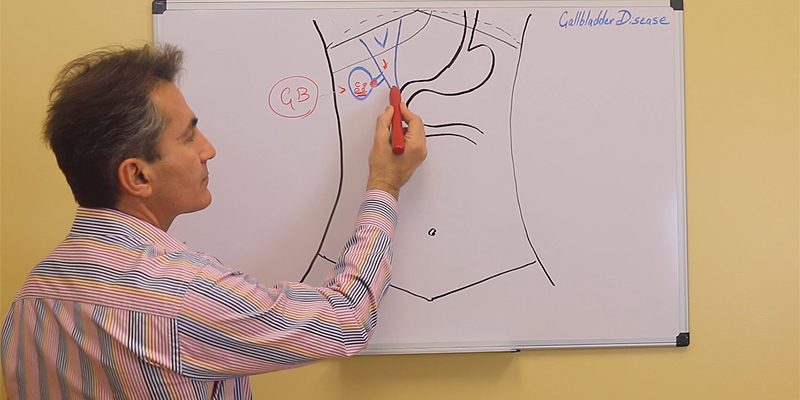Gallbladder Disease Educational Videos
Gallbladder disease is a common problem in the world and at times it is underdiagnosed or even undertreated. The gallbladder is a small structure underneath of the liver and is connected to the liver via a common channel, called common bile duct. It is responsible to store a small portion of the bile that is produced by the liver. The bile normally flows into the small intestine via common bile duct and contains the products responsible for absorption and digestion of the food. The components of the bile could precipitate in the gallbladder and create gallstone. The presence of the gallstone could be associated with symptoms of abdominal pain, bloating, indigestion and reflux. Gallbladder disease symptoms usually present in an episodic manner which called “biliary colic”. Ultrasound is the standard test to diagnose the stone in the gallbladder. The patients with gallstone and signs and symptoms of gallbladder disease require surgical removal of their gallbladder. There are group of patients with similar episodic symptoms, typical of gallbladder disease without having stone in their gallbladder on their ultrasound. This condition is usually related to the abnormal function of the gallbladder and is called “biliary dyskinesia”. In this category of patients we perform “HIDA” scan to measure the function of the gallbladder and if that is abnormal, they also require surgical removal of their gallbladder.
Gallbladder Removal
Now removal of the gallbladder is performed with minimally invasive surgery. In this technique, instead of making a large abdominal wall incision to enter the abdominal cavity, multiple small incisions are created on the abdominal wall to insert a special scope and other special instruments into the abdominal cavity for performing the surgical tasks. Therefore, it minimizes the surgical trauma to the abdominal wall, which later translates to less post-operative pain, faster recovery, less hospital stay and faster return to work. When the surgeon holds and manipulates these instruments directly, it is called laparoscopic surgery. However, robotic technology is also available to assist the surgeon to perform the minimally invasive surgery. The robotic arms are connected to the special instruments and the robotic platform translates the movement of the surgeon`s hand into the movement of the tip of instruments for performing the surgical tasks. The robotic platform offers enhance visualization, better access to the abdominal structures and wristed instrumentation for performing even more complex surgical procedures.
For information or to make an appointment with Dr Iraniha Laparoscopic Specialist and General Surgeon please contact Surgical Oasis Orange County Surgical Center for same day or next day appointment. Or call us at (949) 646-8444.Thank you








